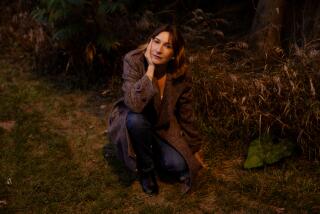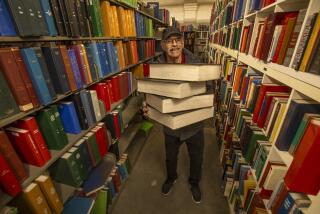The weight of books
My wife calls me the scavenger of shelves. It’s not necessarily a term of endearment, uttered more in the spirit of toleration, or exasperated love. We’ve been together for a long time, more than thirty years, and she’s had no choice but to come to a reckoning with my book absorption, with a library that grows and grows again.
“The books are taking over the house,” she told me, not for the first time, after I had completed a massive reshelving project, close to 4,000 volumes and more than 100 shelves, stretching from the living room into our bedroom, then down the hall to the dining room and my home office, everything alphabetized by author, David Aaronovitch to Stefan Zweig.
It’s the kind of project I take on every seven years or so, usually precipitated by a move. This time, though, the inciting incident was my 50th birthday, for which I gave myself the only gift I truly wanted: a set of built-in, floor-to-ceiling shelves.
She’s right, my wife — the books are taking over the house, as they have taken over every house in which I’ve ever lived. Since childhood, I’ve been both reader and collector, not just defining but, in the most tangible sense imaginable, framing my world through books.
Yes, books are about the interior journey, the fluid back-and-forth between writer and reader, reader and writer, the interplay upon which literature depends. This is one of the best things about them, their insistence that we can only be enlarged, illuminated, by entering the imagination of another, which, in turn, inhabits ours.
And yet, there is another side of books, their physical presence: the sheer weight of all those volumes, the space they occupy. When I look at my books, arrayed from room to room now in their pleasing order, what I see are not just the ideas or narratives they represent but themselves as manifestations of my life.
In part, this has to do with recollection, which can be triggered by artifacts. I’ve been shaping (and reshaping) my library since adolescence, and some of the first books I ever cherished (“The Godfather,” “Slaughterhouse-Five,” “Portnoy’s Complaint”) still have places on my shelves. They are part of my present, yes, but also part of my past, my history: three-dimensional memories.
Among their appeals is that they opened up a world view, which is what the most essential writing does. Yet equally important is their resonance as objects, carried with me, shelf to shelf, apartment to apartment, over decades, physical reminders of who I was and who I am and of my process of becoming, blurring the line between inside and out.
The key word here is physical, since, as anyone who has spent a lot of time with books will tell you, they have a habit of asserting themselves. For much of my working life, I’ve been a critic, which means books get delivered to my doorstep, sometimes by the tens and twenties, every day. Part of my job is to sort them, move them, stack them, decide what to keep and what to discard. Sometimes, after an especially busy week, I find myself hauling hundreds of books to the car, lifting, pulling, shifting, loading and unloading, overwhelmed by what Nicholson Baker has referred to as “the size of thoughts.”
This is something I continually confronted during the great reshelving, when for months virtually every available square foot of floor space in my house was occupied with piles of books. As I dragged them around, integrating the As, then the Bs and Cs, I began not just to see but literally to feel the patterns, to engage with the library as a living weight.
The hundreds of volumes by authors whose last names start with M — at one point, they covered the dining room table; the two books (a copy of the Koran and a meditation on Darwin by David Quammen) that make up the Qs: To move them, to fit each title onto the shelves, was to engage with my library in the most concrete sense.
In his essay “Unpacking My Library,” Walter Benjamin reflects that “for a collector — and I mean a real collector, a collector as he ought to be — ownership is the most intimate relationship that one can have to objects. Not that they come alive in him; it is he who lives in them.”
He’s right, although I see it slightly differently: It is in arranging them, holding them, touching them, that we bring our books to life. Reading, after all, is an activity of the mind and the body; we connect with books not only through language, but also through cover design, typeface, size and heft.
This is true even of books we haven’t read, which fill the shelves of every library, including mine. “Suffice it to quote,” Benjamin insists, “the answer which Anatole France gave to a philistine who admired his library and then finished with the standard question, ‘And have you have read all these books, Monsieur France?’ ‘Not one-tenth of them. I don’t suppose you use your Sevrès china every day?’ ”
That, it goes without saying, doesn’t happen with an e-book, although my purpose here is not to lament. I have e-books also, hundreds of them, public domain mostly, Conrad and Melville and George Gissing and Kate Chopin, downloaded for free, a portable library I can carry anywhere.
Still, it’s different, more a set of snapshots than a collection, lacking the weight of books, the volume of ideas.
In the real world, my new floor-to-ceiling shelves are already full and bulging, and lately I wander the house eyeballing the last remaining bits of open wall space, wondering if they might hold additional shelving, as my wife shakes her head.
“For what else,” Benjamin writes of his own books, “is this collection but a disorder to which habit has accommodated itself to such an extent that it can appear as order?” My wife would heartily agree. And yet, the order Benjamin invokes is hardly an illusion, but rather a way to find myself in all those shelves and volumes, an assertion, a means of saying: I am here.
ALSO:
Announcing the 2012 LA Times Book Prize finalists
Prefer not to? Kevin Smokler says you should reread ‘Bartleby’
Shoson Nagahara’s ‘Lament in the Night’: Rediscovering a lost LA
More to Read
Sign up for our Book Club newsletter
Get the latest news, events and more from the Los Angeles Times Book Club, and help us get L.A. reading and talking.
You may occasionally receive promotional content from the Los Angeles Times.







